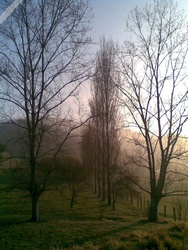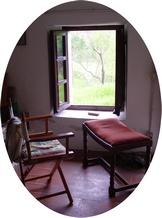
excerpt
LaoJia

Today is the first day of March, and I think of the Lombardy poplars marching across the lower field. They had been planted as saplings, by a friend who happened to be a builder, one morning while I was out running errands. When I returned, I discovered that he had stretched a long piece of string taut, as though to lay the course of a new brick wall, and he had planted the young trees in fine military formation.
Now many years later, each tree has grown in its individual character, each one moulding itself in its particular spot, but they still march towards the eastern hills in a dipping swoop of heights.
This takes me back to the start of these notes on practice and training, begun a little over a month ago. I had just reentered my daily taiji routine that had been interrupted for many months, with the ‘Wading Forwards’ and ‘Step Back Whirling’ of LaoJia, the Chen Old Frame form.
I came to LaoJia in 1995 after nineteen years of practising and teaching the Yang Style 108 Form. The story goes that the Old Frame of the Chen family was taken away from Chenjiagou, the village of the Chen clan, by Yang LuChan, and in the course of a generation or two it acquired a different character to become Yang TaijiQuan.
When I began learning LaoJia, I certainly had difficulty in recognizing my mother-form. Following Chen XiaoWang in the first movement of lifting the arms, I sensed the unknown: there was something directing the arms that was not from breath and muscle as I was used to. And although I saw a difference, I could not copy his way of moving. This experience — of not being able to copy a movement until I begin to understand what powers it from inside — has been repeated time and again in my learning of all the Chen forms, especially in the 38, XinJia and Spear forms.
|
next |

